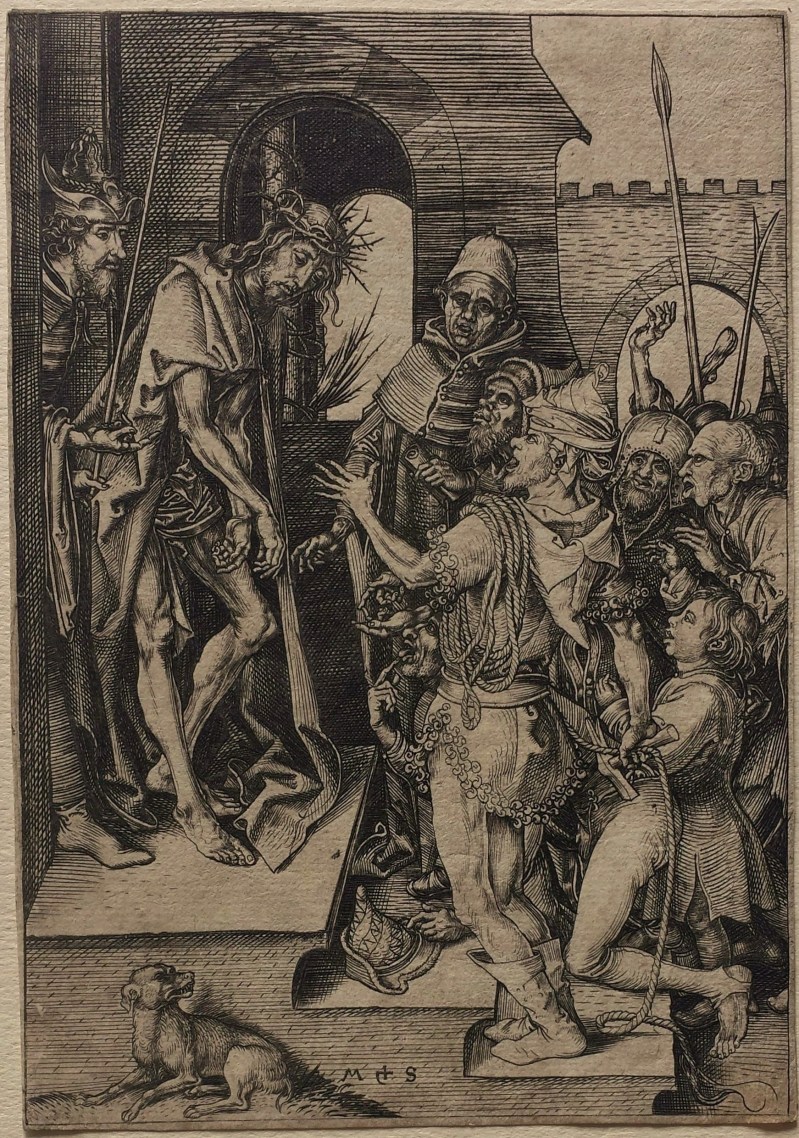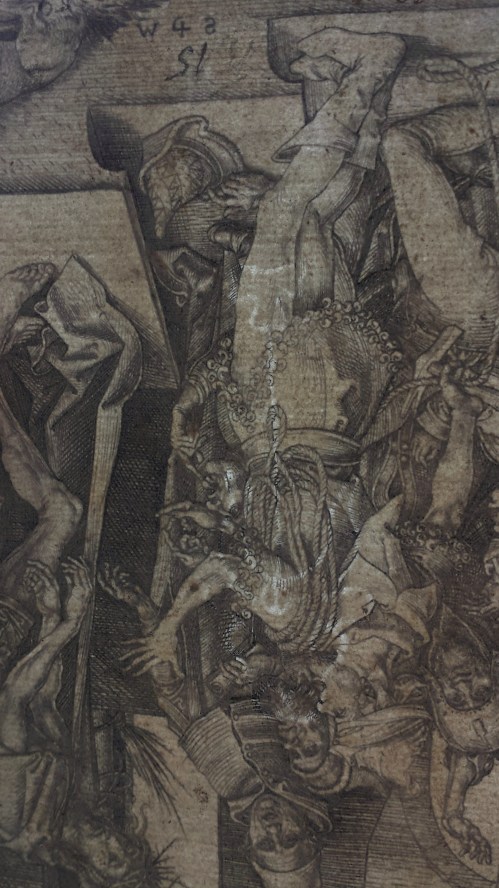Martin SCHONGAUER: Ecce Homo [Christ shown to the People] - c. 1480
SOLD
Engraving, 161 x 112 mm. Bartsch 15, Lehrs 25.
Very fine impression printed on laid paper with watermark (small bull’s head and St. Anthony’s Cross, similar to Briquet 15.156 but with a longer vertical line).
Generally in very fine condition. Three tiny skinning of the paper. 1 mm margin all around the borderline. Signature in ink bottom verso: P. Davidsohn (Lugt 654) and number 778 in pencil in the lower right corner.
Provenance: Paul Davidsohn collection. Paul Davidsohn was a collector and merchant; born in Poland in 1839, he lived first in London, then in Vienna and Berlin. The catalogue for his print collection, sold by Boerner in 1920-1921, contained over ten thousand old master prints from the 15th to the 18th century, divided into over 6000 lots. The impression we are selling has the number 778 on the back, corresponding to its number in the catalogue:
‘778. Das Ecce homo. B. 15. Abdruck von größter Schönheit und tadelloser Erhaltung. Auf Papier mit dem kleinen Ochsenkopf. Mit Rand um die Darstellung.’ [Impression of the highest beauty in perfect condition. Printed on paper with Small bull’s head watermark. With margins all around the subject.] (C. G. Boerner, Sammlung Paul Davidsohn, Grunewald-Berlin: Kupferstiche Alter Meister, Leipzig, 1920-21, vol. 3, p. 75).
This impression is indeed of very good quality. The lines that crisscross dark areas are strong and well mark the contrasts between light and shadows. The scratches on the copperplate are the same that can be seen on early impressions in Amsterdam's Rijksmuseum and in Vienna's Albertina Museum, and without the scratch on the child's cheek which is seen on later impressions.
Ecce Homo belongs to a series of twelve plates on The Passion of Christ. Experts disagree on the exact timeline of works engraved by Schongauer in Colmar between 1470 and 1487 (Lehrs, pp. 120-121). In the catalogue for the exhibition Martin Schongauer, maître de la gravure rhénane (1991), The Passion of Christ is deemed to belong to the first mature phase of the artist, between 1475 and 1480 (p. 94). The Colmar Unterlinden Museum catalogue estimates that The Passion belongs to “later” works, “exhibiting the highest degree of mastery, both in the use of contrasts between light and shadow, and in the way the represented space is organised.” (p. 363)
Lehrs lists five different watermarks found on Ecce Homo impressions, one of which is a "small bull’s head with St. Anthony’s cross" (p. 139). The watermark on this impression represents a small bull's head with a circle on the forehead, surmounted by a vertical line topped with a St. Anthony’s cross. A similar watermark with a shorter vertical line is listed by Briquet under n° 15.156 (Briquet, Les Filigranes, vol. 4, p. 759). Variants of the watermark with "small bull’s head topped with St. Anthony cross" are frequently found on engravings by Schongauer: the catalogue of the Petit Palais exhibition Martin Schongauer (1991) lists six, out of twenty-three watermarks found in the Dutuit collection (pp. 262-264). "The geographical distribution of papers bearing this mark, and their abundance in books printed in Strasbourg and mainly Basel between 1485 and 1530, makes it highly probable that they were made around Basel." (Briquet, Les Filigranes, vol. 4, p. 751).
References: Max Lehrs, Martin Schongauer, Nachbildung seiner Kupferstiche, Berlin, 1914, pp. 138-139; Martin Schongauer, maître de la gravure rhénane, Dutuit collection exhibition catalogue, November 1991, Petit Palais, Paris-Musées, 1991; Le Beau Martin, Gravures et dessins de Martin Schongauer, Musée d’Unterlinden, Colmar, 1991; Briquet, Les Filigranes, 1907; C. G. Boerner, Sammlung Paul Davidsohn, Grunewald-Berlin : Kupferstiche alter Meister, Leipzig, 1920-21.






